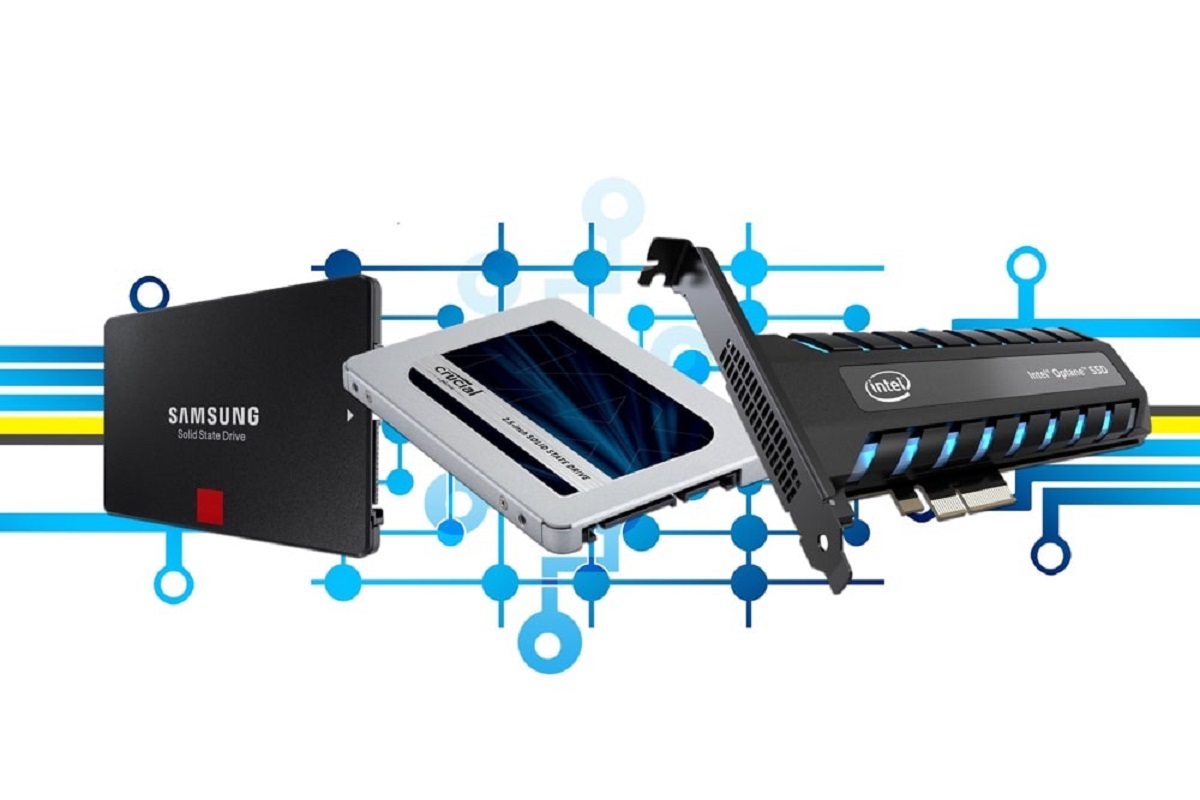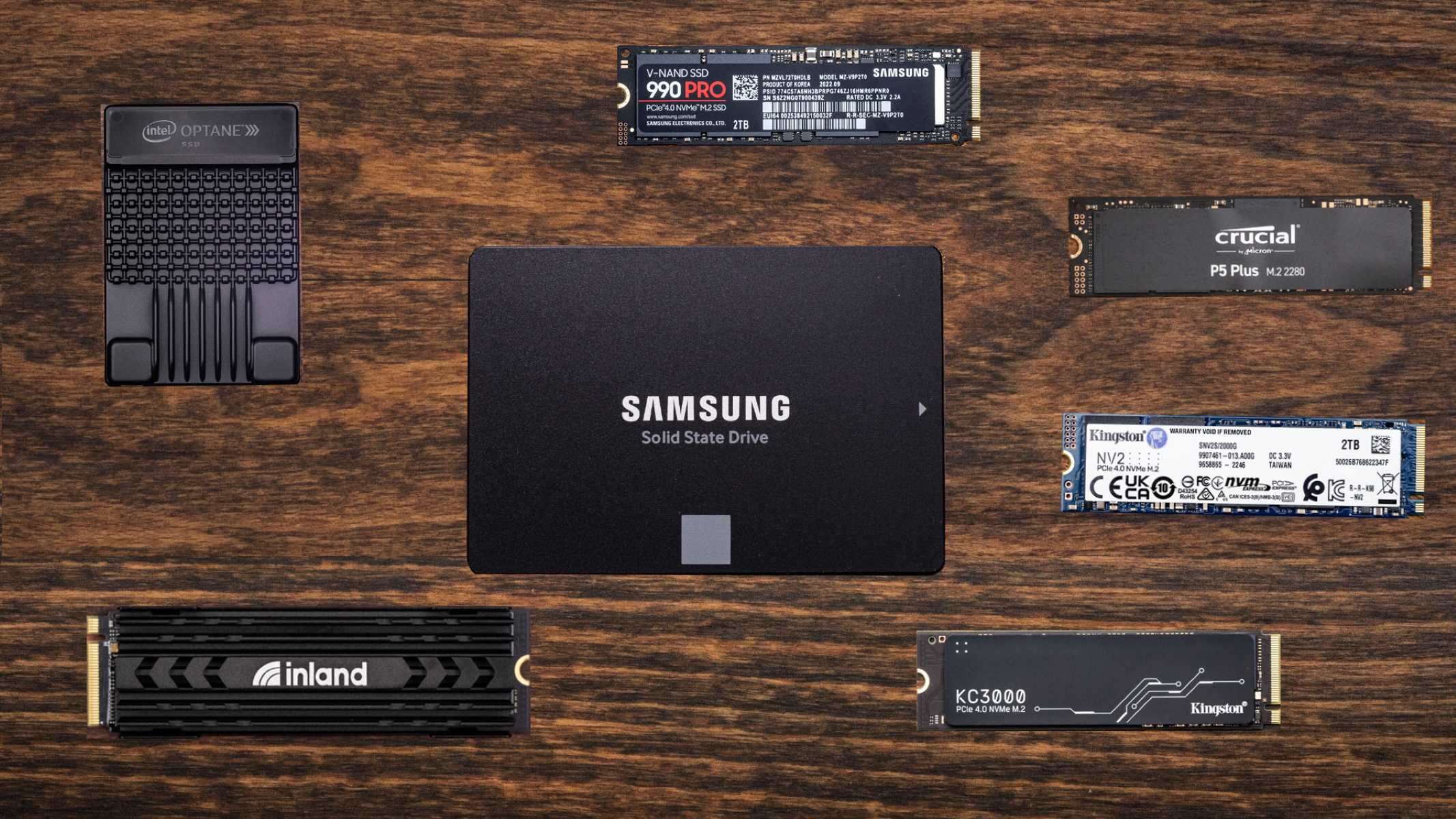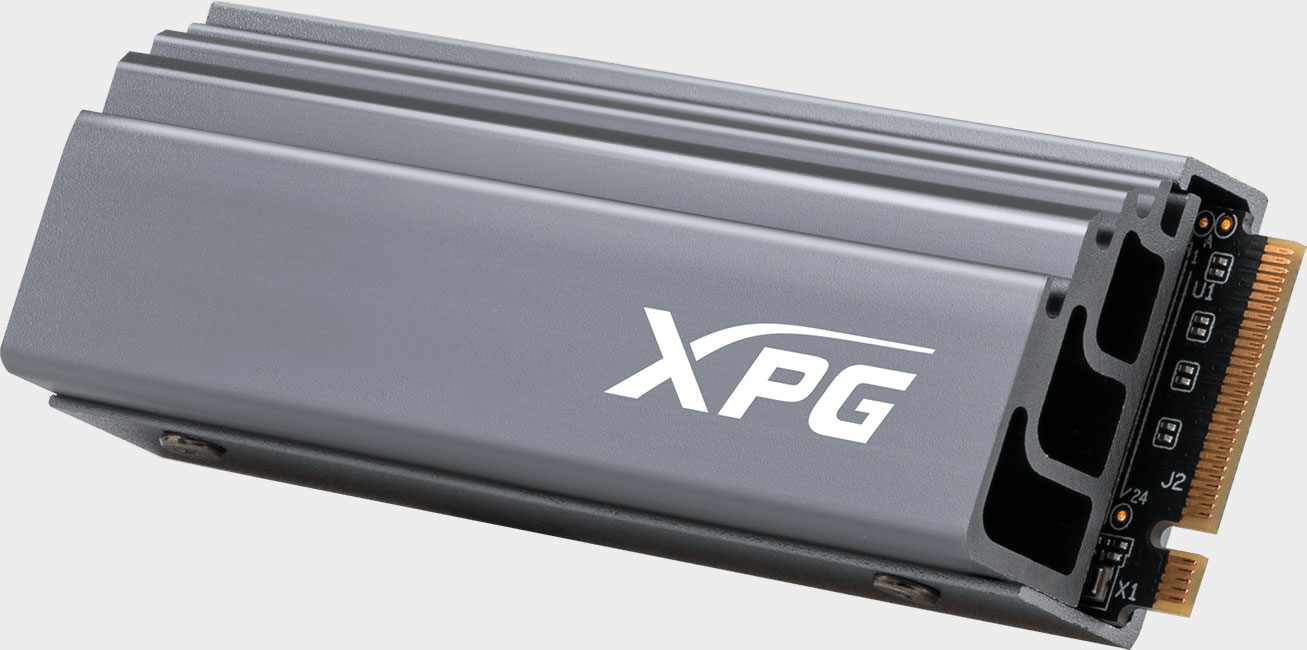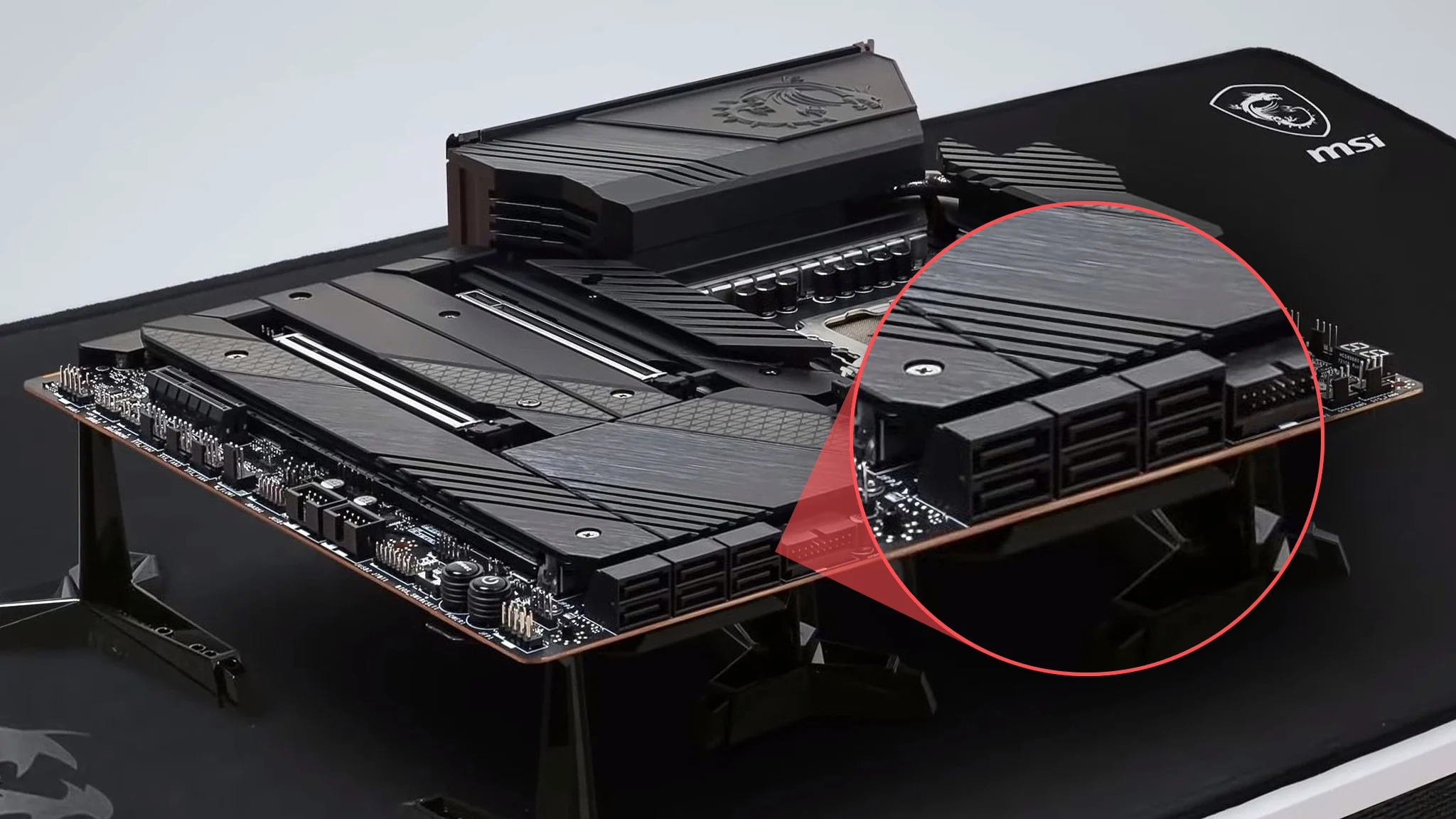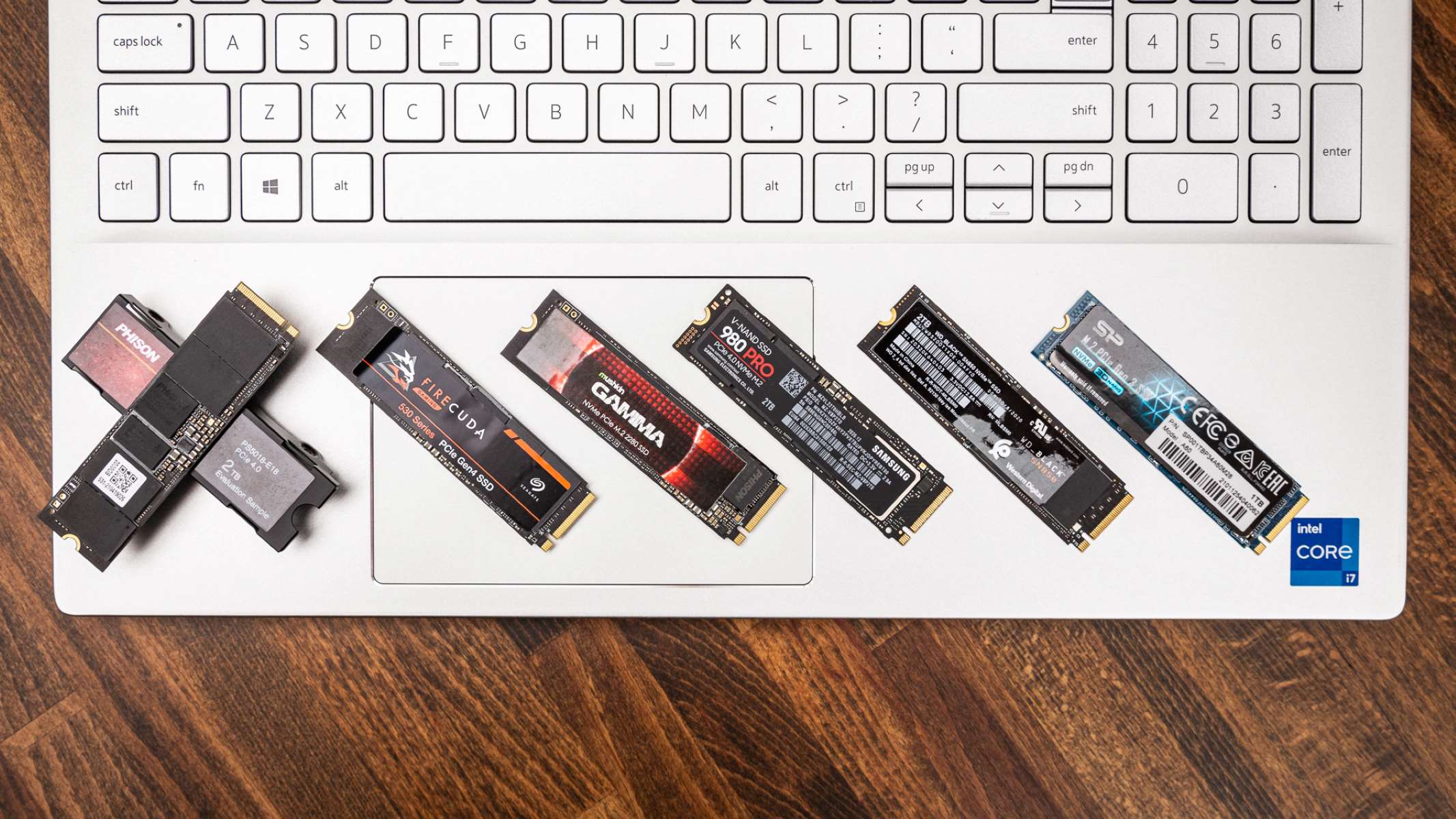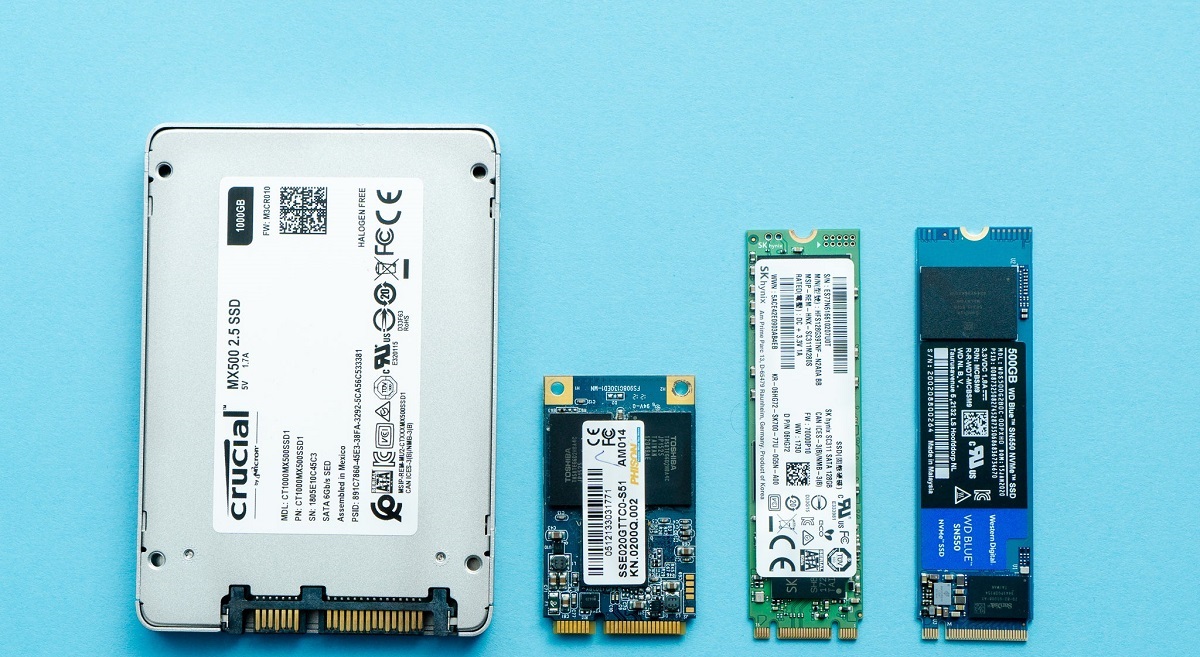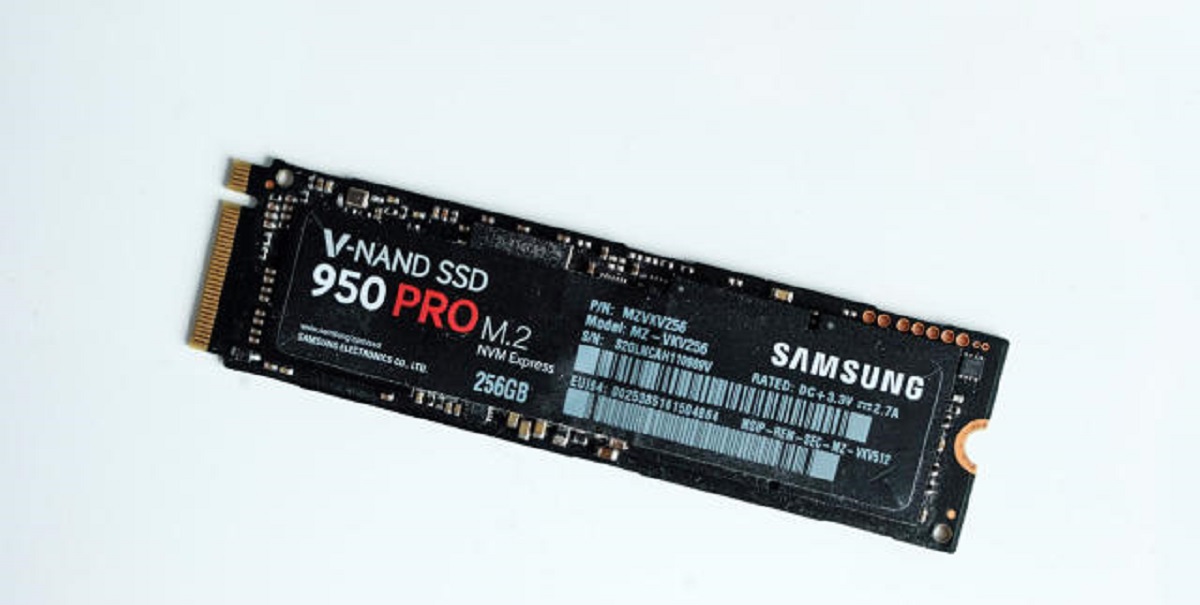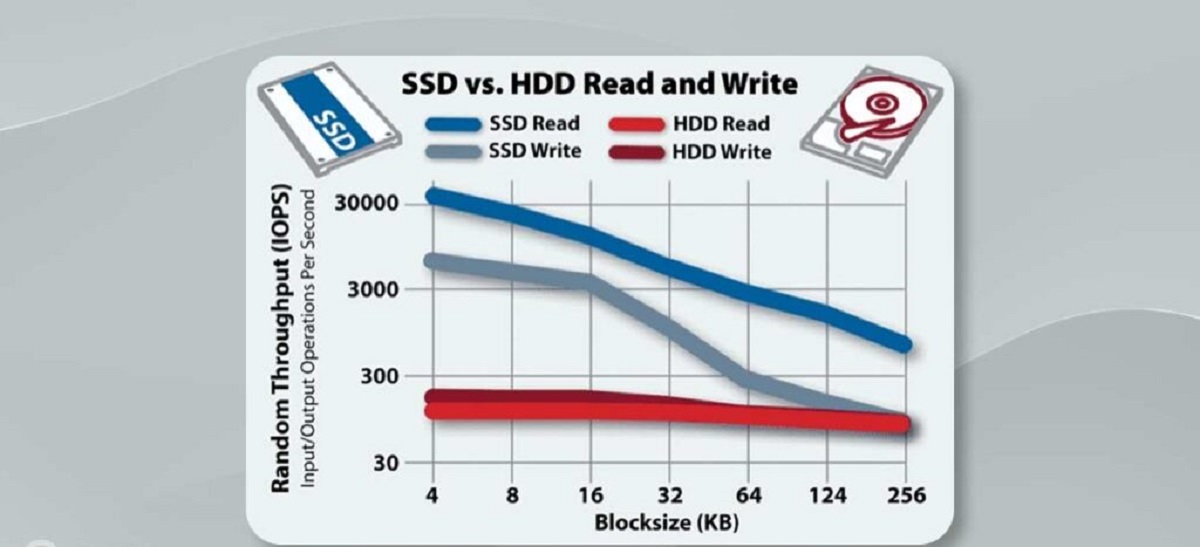Introduction
When it comes to storage solutions, solid-state drives (SSDs) have gained widespread popularity due to their exceptional speed and performance. Unlike traditional mechanical hard drives, SSDs use flash memory to store data, resulting in significantly faster read and write speeds. However, not all SSDs are created equal when it comes to speed. Different types of SSDs offer varying levels of performance, which can have a significant impact on the overall speed and responsiveness of your system.
In this article, we will explore the different types of SSDs available in the market and discuss their speed capabilities. Specifically, we will delve into the differences between SATA SSDs, NVMe SSDs, and PCIe SSDs, which are the most commonly used types of SSDs.
Understanding the distinctions and performance characteristics of each type of SSD will help you make an informed decision when it comes to selecting the fastest option for your specific needs. Whether you are a gamer, content creator, or professional seeking a high-performance storage solution, knowing which type of SSD offers the best speed can greatly enhance your computing experience.
Before we dive into the details, it’s important to note that the speed of an SSD not only depends on its type but is also influenced by several other factors, including the controller, NAND flash technology, and the overall system configuration. Therefore, while choosing the fastest SSD is crucial, it’s equally important to ensure compatibility with your system and consider other aspects that may impact overall performance.
So, without further ado, let’s explore the world of SSDs and compare the speed capabilities of SATA, NVMe, and PCIe SSDs.
SSD Basics
Before diving into the specifics of different types of SSDs, let’s start by understanding the basics of how SSDs work. SSDs, or Solid-State Drives, are storage devices that use non-volatile memory to store and retrieve data. Unlike traditional hard drives that use spinning platters and mechanical read/write heads, SSDs rely on NAND flash memory.
NAND flash memory is a type of non-volatile storage technology that retains data even without a continuous power supply. This allows SSDs to offer faster read and write speeds compared to traditional hard drives because there are no moving parts involved.
Inside an SSD, data is stored in memory cells, which are organized into pages and blocks. During the write process, data is written to specific memory cells using electrical charges. When data needs to be read, the SSD retrieves information from the memory cells. The ability to read and write data electronically makes SSDs much faster than hard drives, resulting in quicker boot times, faster file access, and overall improved system performance.
In addition to speed, SSDs also offer other advantages over mechanical hard drives. SSDs are more resistant to physical shocks and vibrations, as they don’t have any moving parts that can be damaged. They also consume less power, generate less heat, and produce no noise, making them ideal for use in laptops, tablets, and other portable devices.
SSDs can be connected to a computer using different interfaces, including SATA (Serial ATA), NVMe (Non-Volatile Memory Express), and PCIe (Peripheral Component Interconnect Express). Each interface has its own advantages and performance characteristics, which we will explore in the following sections.
Now that we have a basic understanding of how SSDs work, let’s delve into the different types of SSDs and their respective speed capabilities.
SATA SSDs
SATA SSDs, or Serial ATA SSDs, are a common and widely used type of SSD that uses the SATA interface to connect to a computer. SATA SSDs are designed to be compatible with most computers and are an excellent choice for upgrading older systems or those that lack support for more advanced interfaces.
SATA SSDs typically use 2.5-inch form factors, similar to traditional hard drives, making them easy to install in laptops and desktops. They offer decent speed improvements over mechanical hard drives, but they are generally not as fast as NVMe or PCIe SSDs. SATA SSDs can achieve read and write speeds of around 550MB/s, which is significantly faster than traditional hard drives that commonly offer speeds of around 100MB/s.
The main reason for the speed limitation of SATA SSDs is the interface itself. The SATA interface was originally designed for traditional hard drives, and although it has evolved over the years, it is still not optimized for the faster speeds of NAND flash memory. SATA SSDs use the AHCI (Advanced Host Controller Interface), which adds some overhead and can limit the speed potential of the SSD.
Despite their lower speed compared to other SSD types, SATA SSDs still offer significant performance benefits over traditional hard drives. They provide faster boot times, quicker application launches, and improved file transfer speeds. For most everyday tasks such as web browsing, document editing, and multimedia playback, a SATA SSD will provide a noticeable improvement in overall system responsiveness.
It’s worth noting that not all SATA SSDs offer the same performance. The speed capabilities can vary depending on the specific model and the quality of the NAND flash memory used. Some high-end SATA SSDs may offer faster speeds than entry-level options. Therefore, it’s essential to research and compare different models to choose the best SATA SSD that meets your speed requirements and budget.
In the next section, we will explore NVMe SSDs, which offer significant speed improvements over SATA SSDs and are considered the next level in SSD technology.
NVMe SSDs
NVMe SSDs, or Non-Volatile Memory Express SSDs, represent a significant leap in speed and performance compared to SATA SSDs. NVMe is an interface protocol specifically designed for SSDs, eliminating the limitations of the SATA interface and maximizing the performance potential of NAND flash memory.
One of the key advantages of NVMe SSDs is their ability to leverage the PCIe (Peripheral Component Interconnect Express) interface, which provides a direct pathway between the SSD and the CPU. This bypasses the traditional SATA bottleneck, allowing for faster data transfer rates and lower latency.
Compared to SATA SSDs, NVMe SSDs offer dramatically faster speeds. NVMe SSDs can achieve read and write speeds of several gigabytes per second, typically ranging from 2000MB/s to 7000MB/s, or even higher in some high-end models. These faster speeds enable quicker data access, reduced loading times in games and applications, and overall improved system performance.
NVMe SSDs also offer higher IOPS (Input/Output Operations Per Second) compared to SATA SSDs. IOPS is a measure of how many operations a storage device can perform per second, such as reading or writing small files. The higher the IOPS, the faster the SSD can handle small, random operations, resulting in improved multitasking and responsiveness.
It’s important to note that NVMe SSDs require compatible hardware to fully utilize their speed capabilities. To take advantage of NVMe SSDs, your system needs a motherboard that supports PCIe-based storage and an available M.2 or U.2 slot. While NVMe SSDs are backward compatible with PCIe 3.0, they can achieve even faster speeds with the newer PCIe 4.0 interface.
Overall, NVMe SSDs are the go-to choice for those seeking the fastest storage speeds and top-tier performance. They are ideal for demanding workloads, such as video editing, 3D rendering, and gaming, where high-speed data access is crucial. However, it’s worth noting that NVMe SSDs are typically more expensive than SATA SSDs, so they may not be necessary for all use cases.
Next, let’s explore PCIe SSDs, another type of SSD that combines the advantages of NVMe with the speed of PCIe.
PCIe SSDs
PCIe SSDs, or Peripheral Component Interconnect Express SSDs, are a type of SSD that utilizes the PCIe interface to deliver even faster speeds and performance compared to both SATA and NVMe SSDs. PCIe SSDs offer the highest level of performance in terms of data transfer rates and IOPS.
Similar to NVMe SSDs, PCIe SSDs utilize the PCIe interface to establish a direct connection between the SSD and the CPU, bypassing the limitations of the SATA interface. This direct connection allows for incredibly fast read and write speeds, making PCIe SSDs the fastest option available for storage.
PCIe SSDs are available in different form factors, such as add-in cards and M.2 drives. Add-in card PCIe SSDs can be installed into a PCIe slot on the motherboard, while M.2 drives can be directly attached to an M.2 slot on the motherboard. These form factors provide flexibility in terms of installation, depending on the available slots on your motherboard.
Speeds of PCIe SSDs can vary depending on the specific model, but they can reach staggering read and write speeds of up to 15,000MB/s or even higher in some cases. These blazing-fast speeds translate to incredibly quick system boots, near-instant application launches, and lightning-fast file transfers.
For tasks that require intensive data processing, such as large-scale data analysis, 3D modeling, and video editing, PCIe SSDs are the preferred choice. Their unmatched speed and performance significantly reduce loading times and allow for seamless multitasking, enhancing productivity and efficiency.
However, it’s important to consider that the higher performance of PCIe SSDs comes at a higher cost compared to SATA and NVMe SSDs. Additionally, compatibility can also be a factor, as some older motherboards may not have PCIe slots or support the latest PCIe standards.
It’s crucial to verify compatibility with your system’s hardware and consider your specific use case before investing in a PCIe SSD. If you require the absolute fastest storage speeds and have a system that supports the PCIe interface, then a PCIe SSD is the optimal choice to take your performance to the next level.
Now that we have explored the different types of SSDs, let’s compare the performance of SATA, NVMe, and PCIe SSDs in the next section.
Differences Between SATA, NVMe, and PCIe SSDs
When comparing SATA SSDs, NVMe SSDs, and PCIe SSDs, several key differences exist in terms of speed, performance, and compatibility.
The most significant difference lies in the interface they use to connect to the computer. SATA SSDs use the Serial ATA interface, which was originally designed for mechanical hard drives. NVMe and PCIe SSDs, on the other hand, leverage the NVMe protocol and PCIe interface, specifically tailored for SSDs.
In terms of speed, SATA SSDs are the slowest of the three. With read and write speeds typically maxing out around 550MB/s, they still offer a significant improvement over traditional hard drives but fall short compared to NVMe and PCIe SSDs.
NVMe SSDs, by utilizing the PCIe interface, offer considerably faster speeds compared to SATA SSDs. With read and write speeds ranging from 2000MB/s to 7000MB/s or higher, they provide a noticeable boost in system performance and responsiveness.
PCIe SSDs take speed to an even higher level. By using PCIe as the interface, they can achieve incredibly fast read and write speeds that can exceed 15,000MB/s. This makes them the fastest option among the three types of SSDs.
In terms of compatibility, SATA SSDs are the most universally supported as most computers, including older systems, come equipped with SATA ports. NVMe and PCIe SSDs, however, require compatible hardware and a motherboard that supports their respective interfaces. It’s essential to check the compatibility of your system before investing in these SSD types.
When it comes to cost, SATA SSDs are generally the most affordable option, making them an excellent choice for those looking for a cost-effective speed upgrade. NVMe SSDs tend to be priced higher than SATA SSDs due to their improved performance, while PCIe SSDs are usually the most expensive due to their cutting-edge technology and superior speeds.
Ultimately, the choice between SATA, NVMe, and PCIe SSDs depends on your specific needs and budget. If you require faster speeds and have a compatible system, NVMe or PCIe SSDs are the optimal choices. However, if you are on a tight budget or have an older system without support for NVMe or PCIe, a SATA SSD will still provide a significant performance boost over traditional mechanical hard drives.
Now that we have compared the differences between SATA, NVMe, and PCIe SSDs, let’s explore the factors that can affect the speed and performance of SSDs in the next section.
Comparing Performance
When it comes to performance, it’s important to consider various factors that can impact the speed and efficiency of SSDs. While SATA, NVMe, and PCIe SSDs differ in their inherent speeds, other elements also play a crucial role in determining their overall performance.
One such factor is the quality of the NAND flash memory used in the SSD. Higher-grade NAND flash memory, such as SLC (Single-Level Cell) or MLC (Multi-Level Cell), generally offers faster performance compared to lower-grade TLC (Triple-Level Cell) or QLC (Quad-Level Cell) memory. The type and quality of the memory can significantly affect the speed and durability of the SSD.
Another significant factor is the controller used in the SSD. The controller acts as the bridge between the NAND flash memory and the computer system, managing data flow and ensuring efficient communication. A high-quality controller can optimize data access, improve garbage collection, and enhance overall performance.
The number of memory channels in the SSD can also impact performance. More memory channels allow for parallel data transfer, increasing overall speed and throughput. NVMe and PCIe SSDs, with their direct CPU connection, often offer more memory channels compared to SATA SSDs, resulting in faster performance.
Additionally, the form factor of the SSD can influence its performance. While 2.5-inch SATA SSDs are widely used and offer decent speed improvements, M.2 NVMe and PCIe SSDs can provide even faster performance due to their direct connection to the PCIe interface.
It’s vital to consider these factors when comparing the performance of SSDs. While SATA SSDs may have limitations in terms of speed due to their interface, they can still deliver significant improvements over traditional hard drives. NVMe SSDs, thanks to their optimized protocol and PCIe interface, provide faster performance and reduced latency. PCIe SSDs, with their advanced technology and superior connectivity, are the fastest option available, ideal for intensive workloads and demanding tasks.
When selecting an SSD, it’s also important to assess your specific use case. Evaluate the type of applications you frequently use, the nature of your work, and your budget. This will help determine whether the increased performance of NVMe or PCIe SSDs is necessary for your needs, or if a SATA SSD will suffice.
Now that we’ve explored the factors affecting SSD performance, let’s conclude our discussion in the next section.
Factors Affecting SSD Speed
While the type of SSD you choose plays a significant role in determining its speed, several other factors can impact the overall performance of an SSD. Understanding these factors is crucial for optimizing the speed and efficiency of your SSD.
One of the primary factors is the type of NAND flash memory used. As mentioned earlier, different types of NAND flash memory, such as SLC, MLC, TLC, and QLC, offer varying levels of speed and endurance. SLC, being the fastest and most durable, delivers the best performance but comes at a higher cost. TLC and QLC, on the other hand, offer higher storage capacities but may have slightly slower speeds and lower endurance.
The SSD controller also plays a crucial role in determining speed. A high-quality controller can improve data transfer rates, manage data access efficiently, and optimize performance. The efficiency and effectiveness of the controller can significantly impact the overall speed and responsiveness of the SSD.
The number of memory channels in the SSD is another important factor. More memory channels enable parallel data transfer, leading to improved speed and throughput. NVMe and PCIe SSDs often have more memory channels compared to SATA SSDs, allowing for faster data access and read/write operations.
The amount of cache in the SSD can also affect speed. A larger cache allows for faster data access and better performance, especially for small, random read and write operations. The cache acts as a temporary buffer, reducing the reliance on the slower NAND flash memory and improving overall speed.
Another factor to consider is the firmware of the SSD. Manufacturers often release firmware updates that can optimize performance, fix bugs, and enhance compatibility. Keeping your SSD firmware up-to-date can ensure that you are getting the best speed and performance possible.
It’s also worth mentioning that the overall system configuration and usage pattern can impact SSD speed. For example, having sufficient system RAM can reduce the need for virtual memory and improve overall performance. Additionally, heavy multitasking or running resource-intensive applications can put a strain on the SSD and potentially affect speed.
Lastly, it’s important to note that SSDs may experience a gradual decline in speed as they fill up with data. This is because as the drive becomes more occupied, finding contiguous free space becomes more challenging, leading to fragmented data and fragmented performance. Regularly performing SSD maintenance procedures such as trim or garbage collection can help mitigate this issue and maintain optimal speed.
By considering these factors and taking appropriate measures, you can maximize the speed and performance of your SSD. Whether it’s selecting the right type of SSD, monitoring firmware updates, or optimizing your system configuration, being mindful of these factors can ensure that you get the most out of your SSD’s speed capabilities.
Now that we’ve covered the various factors affecting SSD speed, let’s wrap up our discussion.
Conclusion
Choosing the right type of SSD can have a significant impact on the speed and performance of your system. SATA SSDs offer a noticeable improvement over traditional hard drives and are a cost-effective choice for most users. NVMe SSDs, with their optimized protocol and direct CPU connection, provide significantly faster speeds and reduced latency, making them ideal for demanding workloads. PCIe SSDs take speed to the next level by utilizing the PCIe interface, delivering unparalleled performance for those seeking the fastest storage speeds available.
When selecting an SSD, it’s crucial to consider various factors such as the type of NAND flash memory, the quality of the controller, the number of memory channels, and the overall system configuration. Additionally, compatibility with your system’s hardware and the specific use case should be taken into account.
While speed is an essential consideration, it’s also important to balance it with other factors such as cost, capacity, and endurance. Evaluating your specific needs, budget, and performance requirements will help you determine the optimal SSD for your use case.
By understanding the differences between SATA, NVMe, and PCIe SSDs, considering the factors that affect SSD speed, and making an informed decision based on your requirements, you can ensure a significant boost in system performance and a seamless computing experience.
Remember to stay informed about firmware updates, perform regular maintenance procedures, and keep your system optimized to maintain the longevity and speed of your SSD.
Investing in a high-quality and fast SSD will undoubtedly transform your computing experience, providing faster boot times, quicker application launches, and improved file transfer speeds.
Choose the SSD that aligns with your needs and budget, and enjoy the benefits of lightning-fast storage for years to come.







